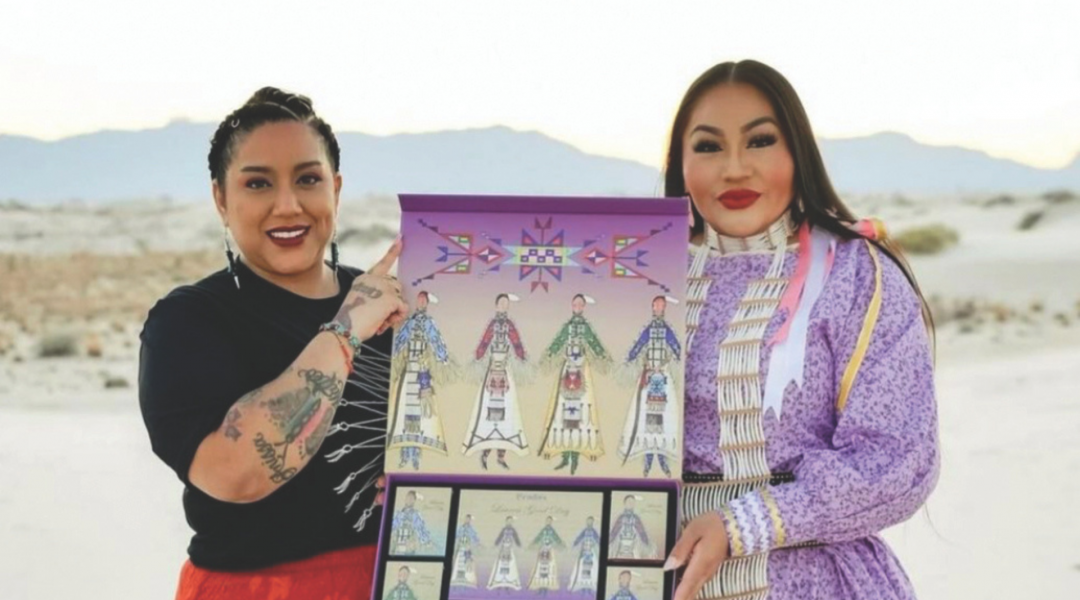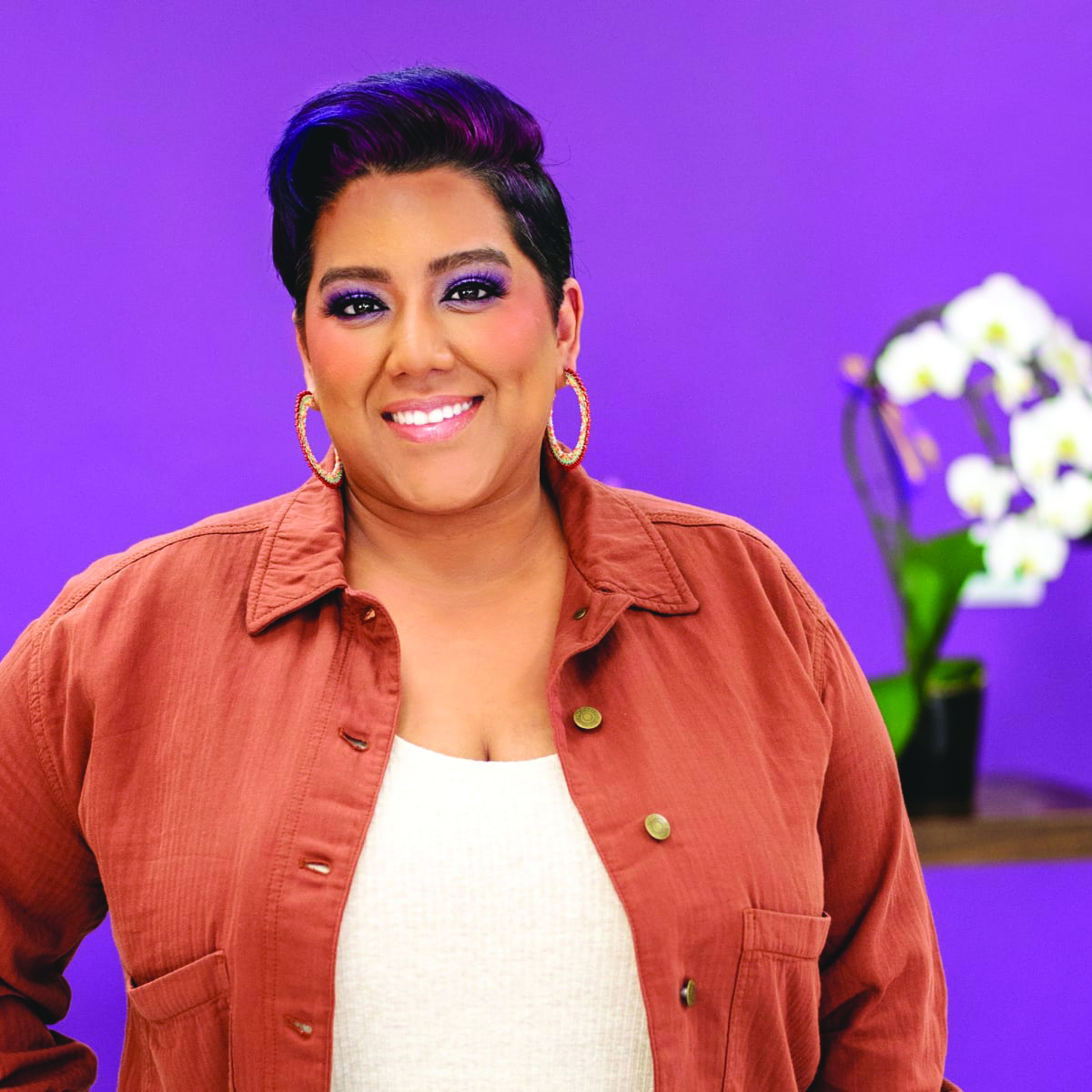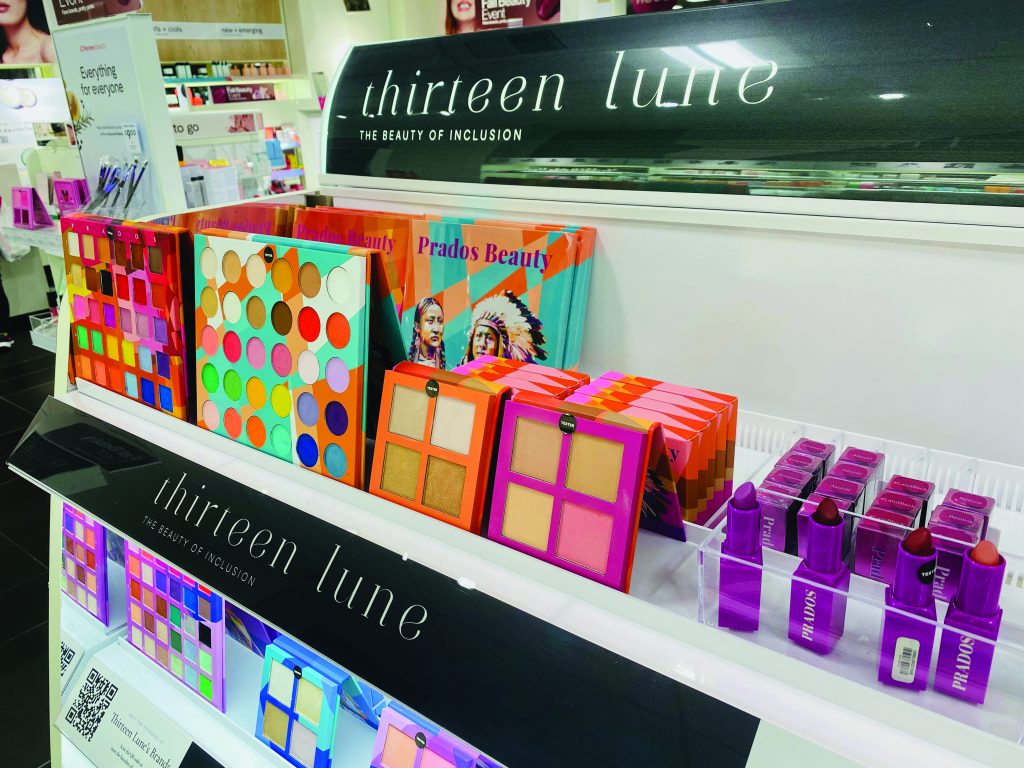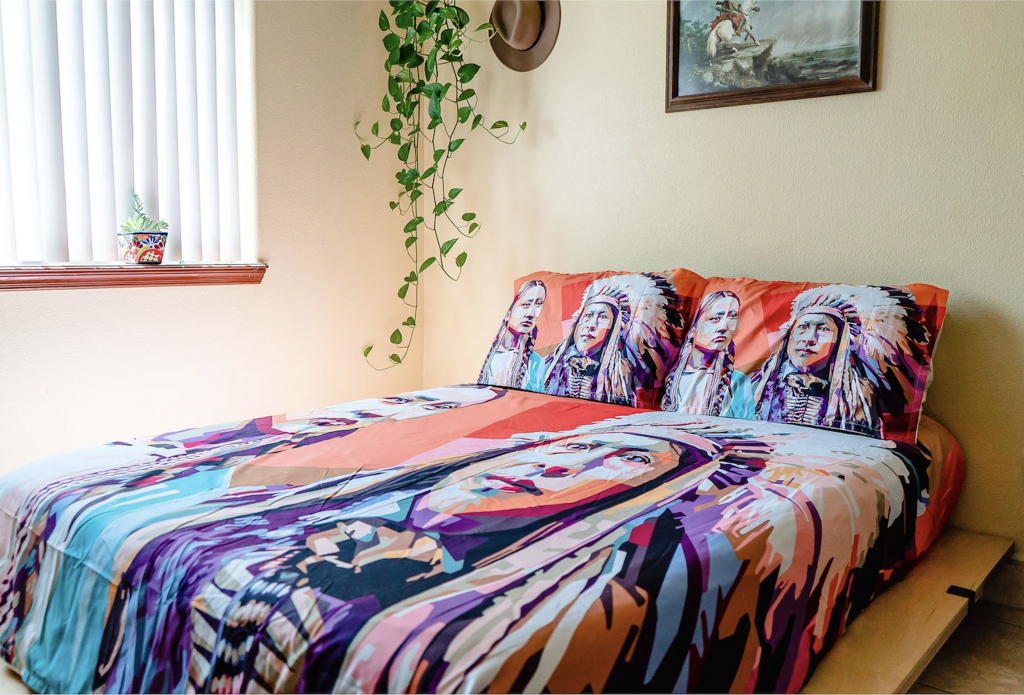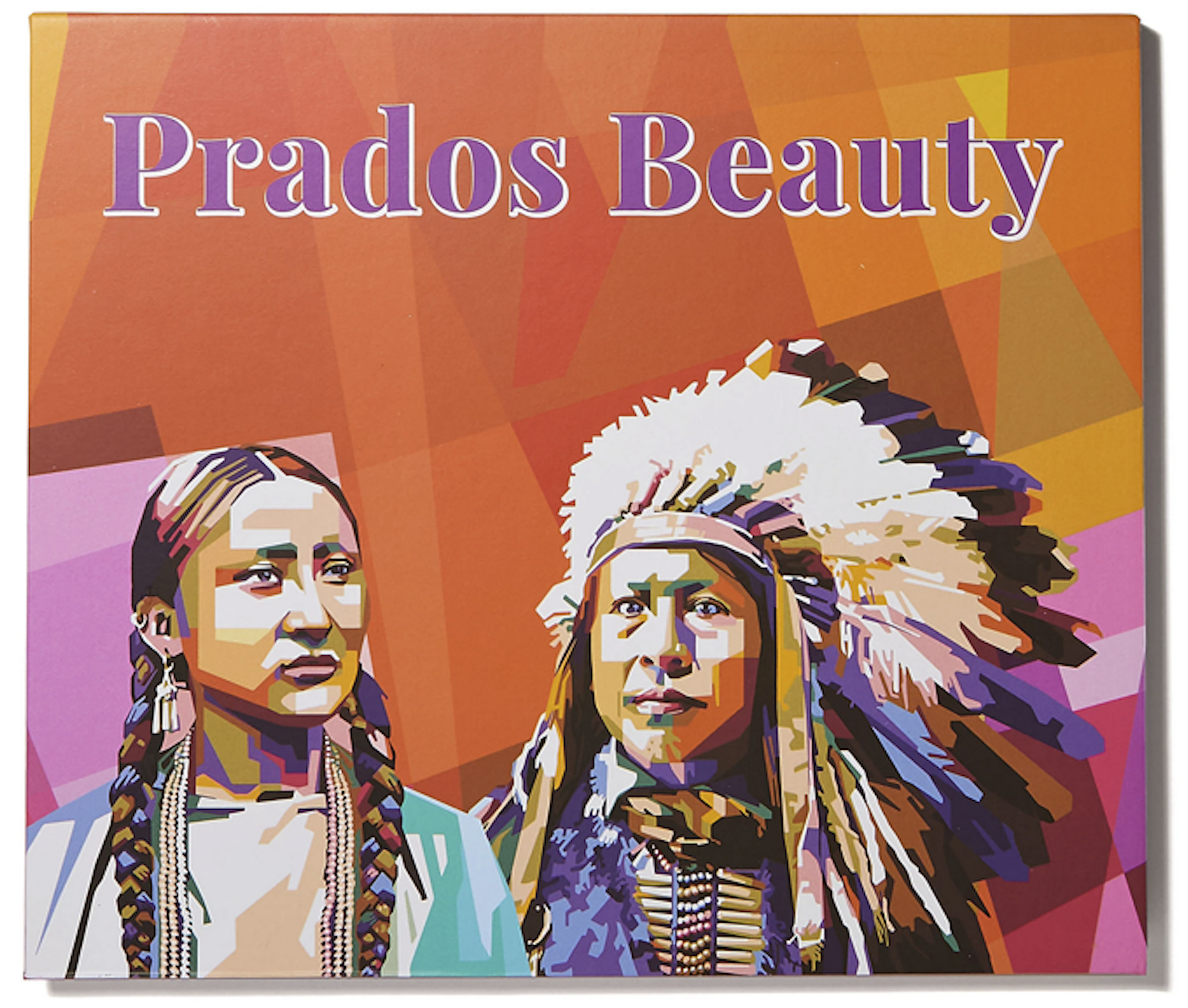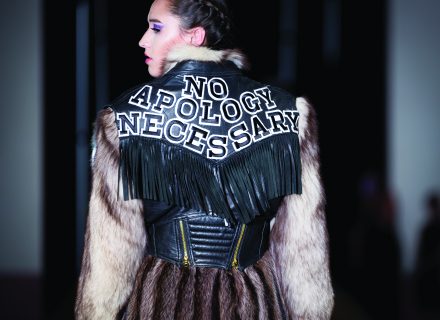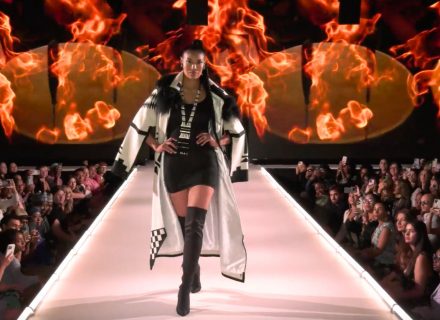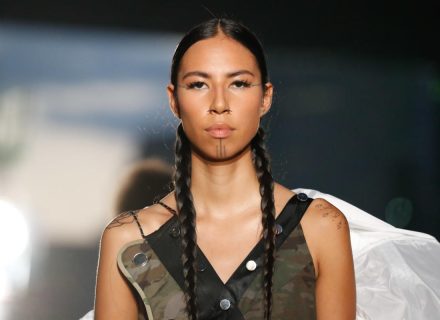Cece Meadows’ line of beauty and lifestyle products aims for both inclusivity and outreach.
The vibrant colors of a sunset, the grandness of the sky, the energy of pop art, and the traditions of Native American culture are all inspirations for the Indigenous-owned cosmetic company Prados Beauty. Its official mission? To make skin-elevating products while giving back to Native communities. The company was initially aimed at finding beauty solutions for folks going through treatments for cancer and other conditions — experiencing side effects from sensitive skin and hair loss. There was also a noticeable absence of makeup and skincare lines created by and for Indigenous women.
The woman behind Prados is Cece Meadows (Xicana, Yaqui, and Comanche), a cancer survivor herself who grew up on a farm outside of Yuma, Arizona. Since founding the company, she’s seen her line hit the mainstream market. Prados is now sold in more than 600 JCPenney stores and is a top-selling brand there. It has been incorporated into looks for high-profile fashion shows and pop-up events around the country, and Meadows continues to collaborate on special releases with fellow creators, such as the sheet sets and tote bags (available online) that carry the art from the makeup packages.
But first, how did it all begin? Meadows recalls the difficulties and the fish-out-of-water feeling when moving away from her family to the Big Apple to enroll in the New York Makeup Academy. But she found her footing as she studied and developed her skill and passion for cosmetics. “Once I graduated, I was invited to be the first Native American makeup artist at New York Fashion Week. I was so excited, but I saw there was a complete marginalization of Indigenous and Native people in that space, and I thought, This needs to change.”
[1] Prados Beauty display at JC Penney’s Thirteen Lune kiosk in Palm Springs, California. [2] A range of Prados Beauty products. [3] Prados Beauty duvet cover set.
In her late 20s, Meadows had worked in finance in California and gone through a life-changing bout with ovarian cancer. She recovered in about a year, but she lost her hair. Bright, colorful makeup became her new identity after a visit to a makeup counter where they gave her a makeover. This inspired her to help others the same way.
“As a cancer survivor, I had been volunteering at units at hospitals for patients and was doing makeup on cancer patients. I understood the need to have tools that were for our faces. I designed makeup brushes that cancer patients and people with skin sensitivities could use, and lashes that looked natural.”
Cece spent a few years designing and developing her personal-use products. After the move to New York, she attended a makeup convention there, where she enlisted a manufacturer to help take her products to the next level. “We launched in 2019 with eyelashes, eye shadow, and makeup brushes. I had a five-year plan, but the brand grew and took off much faster than the plan we laid out.”
Once I graduated, I was invited to be the first Native American makeup artist at New York Fashion Week. — Cece Meadows
Connecting Through Creativity
Enthusiastic about the chances to collaborate with other Indigenous creatives, Meadows connected with artist Steven Paul Judd (Kiowa/Choctaw) over Instagram for assistance with the design of her packaging. Her kids were fans of his pop art.
“He is the perfect example of someone who is Indigenizing modern images and creating a space for us to see ourselves,” Meadows says of Judd. “We now have three collaborations together where he designed the artwork on the packaging using real Indigenous people, and the color palette is inspired by his artwork. We even have a sheet set with the designs.”
Judd came up with bright, colored, mosaic-like pop art portraits of Arapaho warrior chief Pretty Nose, who fought in the Battle of the Little Bighorn in 1876; and of Dakota Chief Stampede, based on a picture from 1900. The colorful images adorn the covers of the eyeshadow and blush palettes as well as a set of sheets and pillowcases.
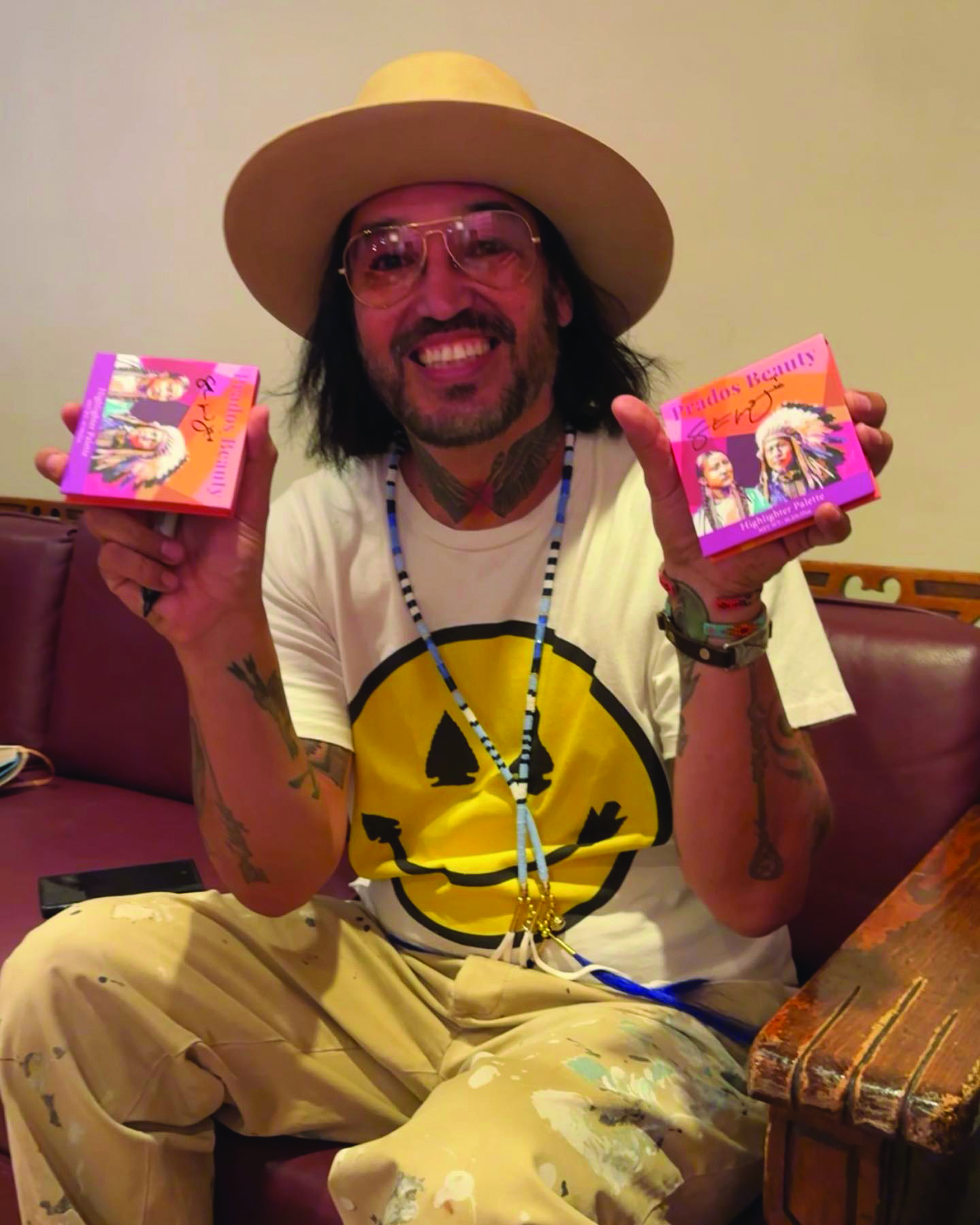 Artist Steven Paul Judd, holding the Prados Beauty packaging he designed.
Artist Steven Paul Judd, holding the Prados Beauty packaging he designed.
As part of Prados’ motive to give back, Meadows has always donated 50 percent of sales to various groups and communities. She even didn’t turn a personal profit for three years. “We were giving away 50 percent of the sales to Indigenous communities hit hard by COVID,” Meadows says. “We showed proof online of what the money was going toward, sending big boxes and shipments to the Navajo Nation, to North and South Dakota and Arizona and Mexico. We posted on social media; I think that solidified us as a beauty brand that does what they say.”
There’s another exciting collaboration and outreach project with designer Lauren Good Day (Arikara, Hidatsa, Blackfeet, and Plains Cree) who is known for her striking clothing designs of elk teeth prints, strong graphics, and inclusive designs for plus size people and kids. “Like me, she’s a mother and an entrepreneur,” Meadows says of Good Day. “A businesswoman. I love her art, her fashion, and her clothing. It’s not about us just creating generational wealth for myself, for my family, or my employees, but it’s also about the artists and community.”
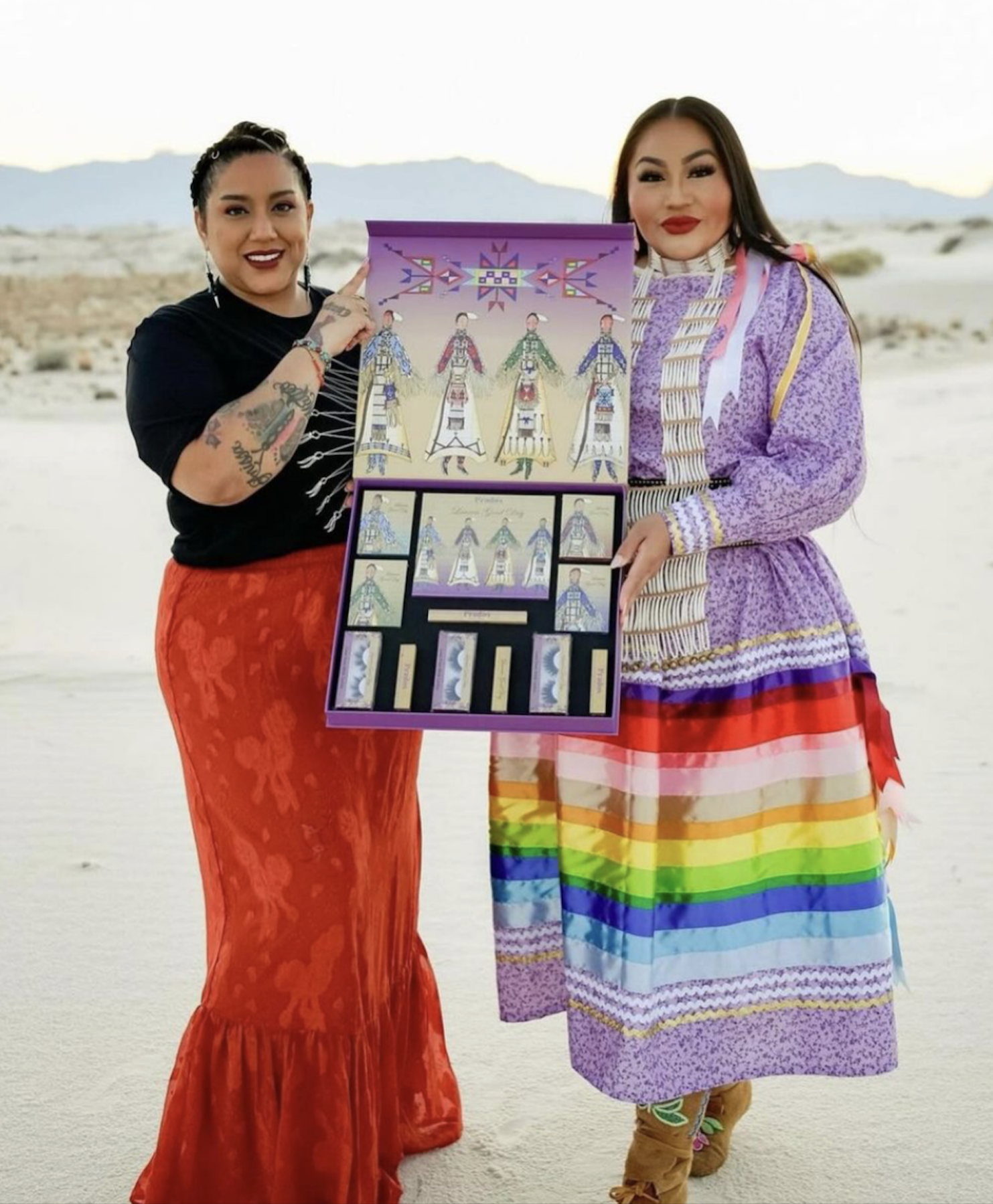 Cece Meadows with Lauren Good Day and their collection.
Cece Meadows with Lauren Good Day and their collection.
Good Day sent Meadows a huge ledger art piece for her to scale and put on product boxes — to create a whole color story. “It was a long process; Lauren got to pick the eyeshadow colors and play with formulations. It was a whole different process for Lauren. I wanted her to feel like she was a part of it every step of the way and not just someone who created the art.”
“I give a piece of ownership to the artists,” Meadows says. “That’s what makes our collaborators happy. They don’t feel like their art is being used to make me money — it’s being used to make us money, and we give some of it back.”
Next Up For Prados?
The next collection will be released on or around Indigenous Peoples Day in October and will focus on Meadows’ heritage, both Native American and Mexican. “We’re trying to bridge the gap between that relationship of Native Americans and Native people of Mexico. My father is from Sonora, Mexico. There’s still a big conversation that people think that Mexican is a race, but really, it’s just a location, and it wasn’t called Mexico before it was colonized,” Meadows says. “We are bridging that gap between two Native groups of people with this collection; we’re still working on the designs and picking colors. It’s a collaboration with an LA artist.”
“This collection is going to be smaller because we want to cater to our customer base who told us in market research they want smaller travel sizes. We get feedback at pop-ups, and online. I’m feeling the same things that my customers are feeling — I want the most value for my money. Our commitment is always to sustainability: high quality and long-lasting. And to give back to our community. The quality products are vegan, cruelty-free, gluten-free, and highly pigmented.”
Meadows has a freestanding store in Las Cruces, New Mexico, that she opened in 2021. She also runs a warehouse that handles distribution to the JCPenney locations. Prados Beauty had a booth at the La Fonda Hotel in Santa Fe during the first SWAIA Native Fashion Week in May where several designers used its makeup. Find out more at pradosbeauty.com.
From our October 2024 issue.
PHOTOGRAPHY: Courtesy of Prados Beauty and Sandra Hale Schulman






